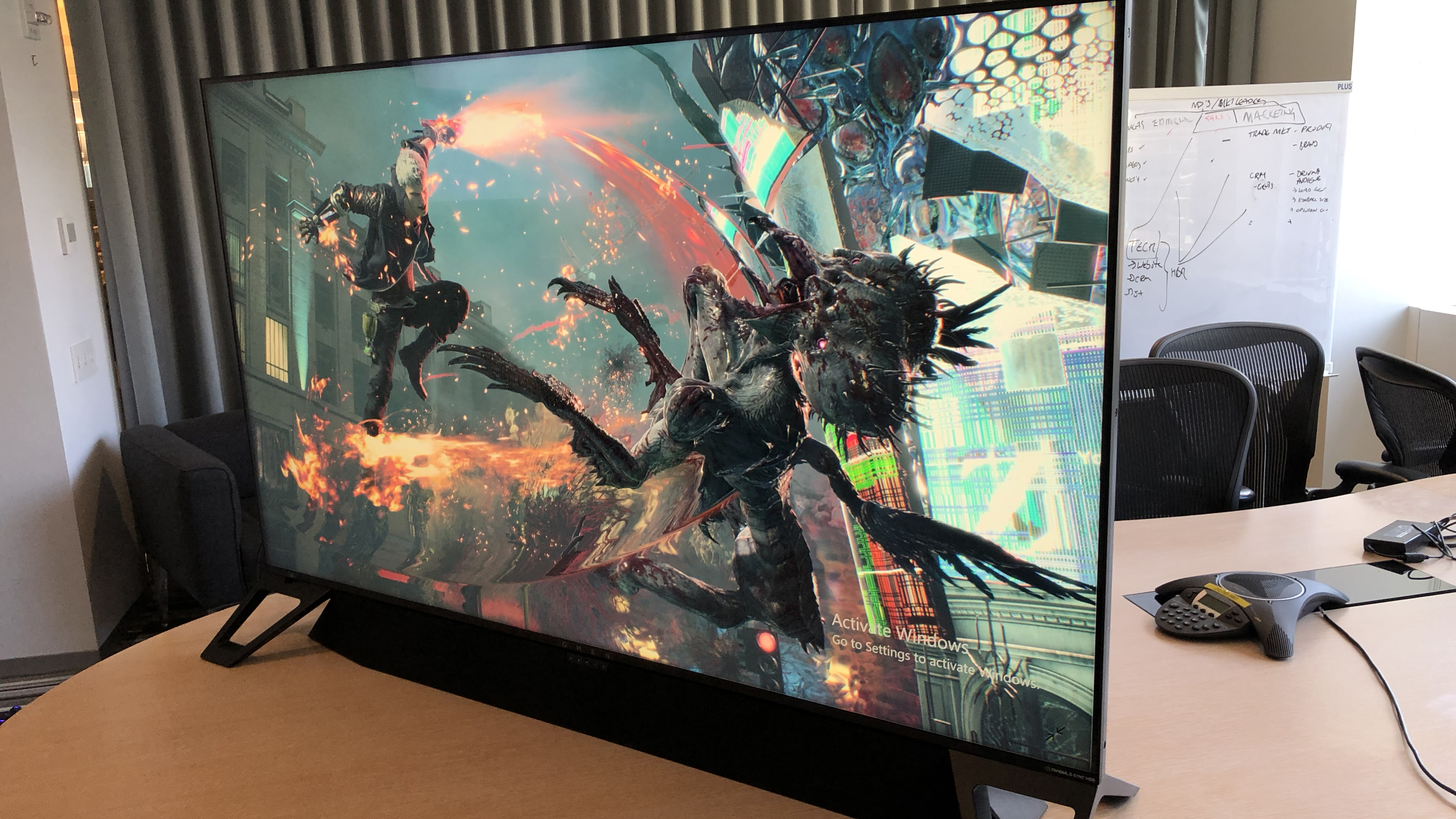Our Verdict
Whether you consider it a TV, a monitor, or both, the HP Omen Emperium 65 may present some compelling specs, but don't be fooled: the first-ever Nvidia BFGD makes some pretty unflattering sacrifices despite its extravagant $5,000 barrier to entry.
For
- Massive 4K 144Hz G-Sync display
- Impressive DCI-P3 color gamut
Against
- Disproportionately expensive price point
- 14ms response time
- Not OLED or IPS
- Mediocre default soundbar quality
- Doesn't include VESA mount or SPDIF cable
PC Gamer's got your back
I will never be able to afford the HP Omen X Emperium 65 monitor. As gorgeous as it looks on display at our New York City office, the grim reality is that HP's 65-inch 4K HDR G-Sync gaming monitor costs a whopping $4,999.99, nearly twice as much as the current top pick in our ever-changing list of the best 4K TVs for gaming. For me, five grand is almost half a year's rent.
Measuring 64.5 inches diagonal, you'd be well within your rights to say the HP Omen X Emperium is more TV than monitor. While it may not fancy itself a proper TV tuner on the back, traditional cable television is losing out to on-demand, subscription-based streaming services, like Netflix and Hulu. The Emperium supports most of these out of the box. By claiming it's not a TV, HP is purposely obfuscating what qualifies as a TV, and what doesn't, confusing and perhaps alienating prospective buyers as a result.
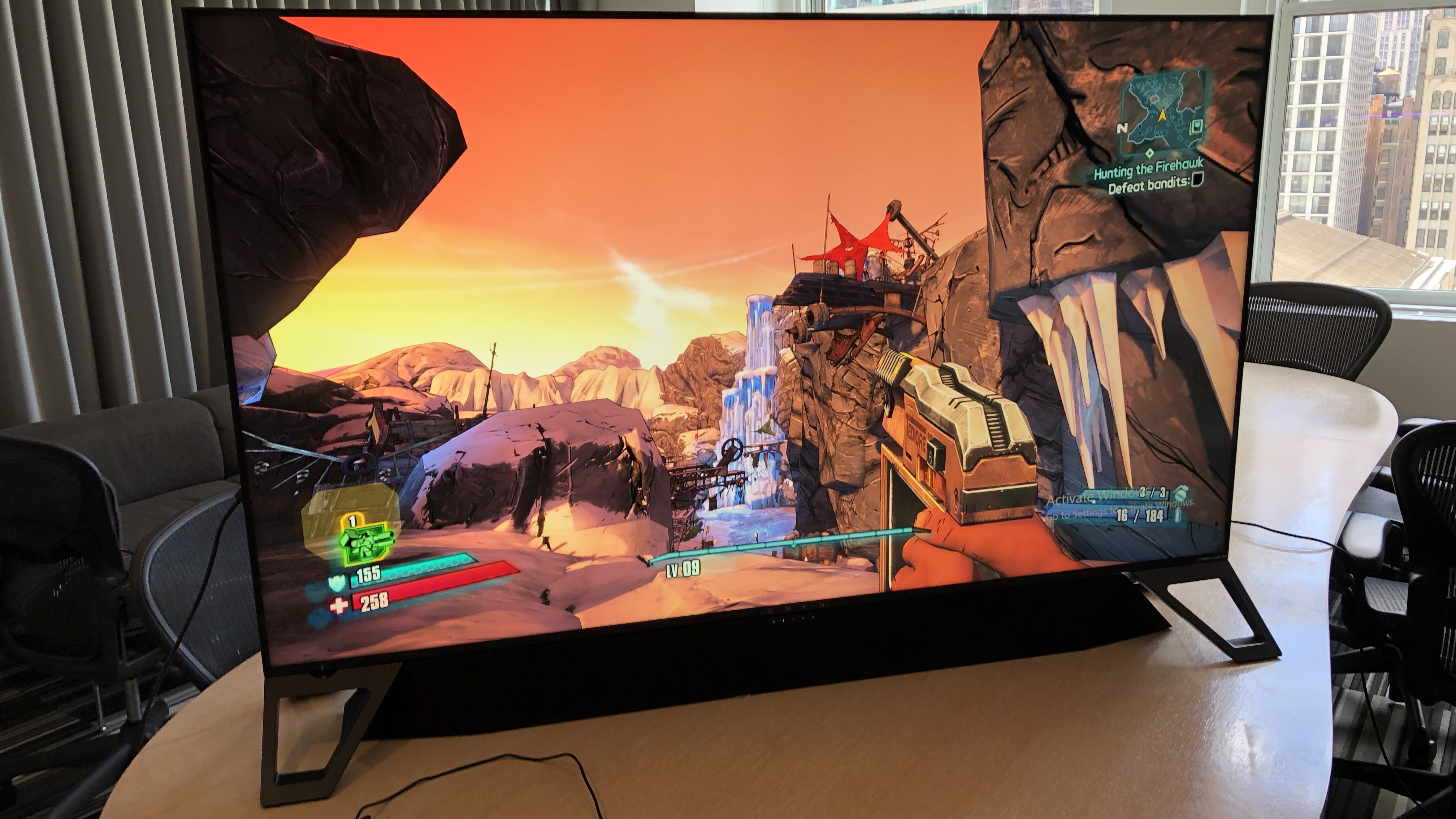
Marketing quibbles aside, because it's a "BFGD," or Big Format Gaming Display, the HP Omen X Emperium is no stranger to Nvidia. Built into the monitor is an Nvidia Shield TV. From the moment you boot it up, an extensive catalog of Google Play Store apps are available at your disposal. Accessible through the included remote, Google Assistant lets you summon those applications and command smart home devices. What's more, you can even stream select games from your PC using Nvidia Gamestream or, assuming you have access to the beta, from Nvidia's servers for free by way of GeForce Now. That integration alone is a $200 value.
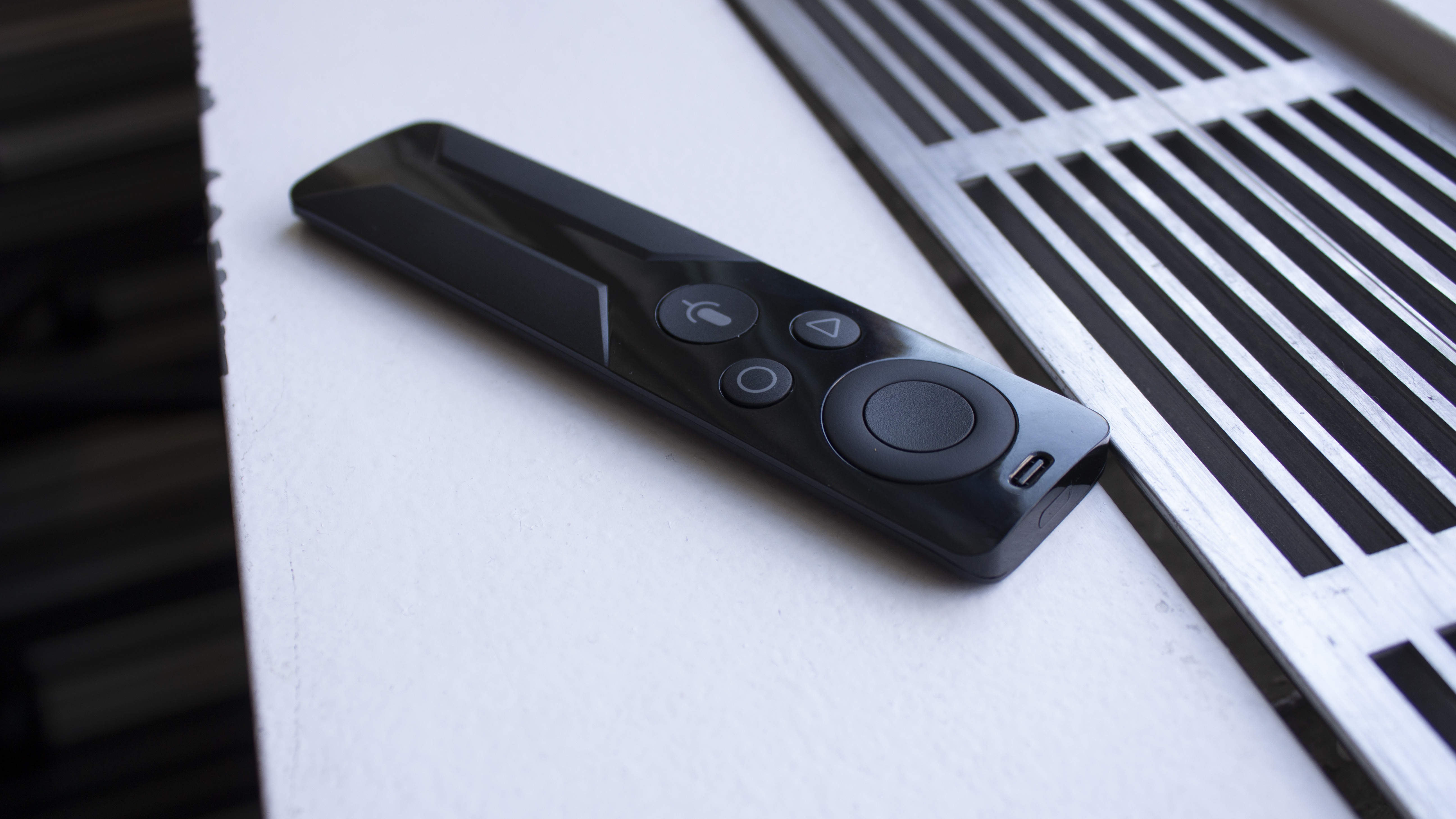
Chances are, the Emperium won't fit on top of your desk. Instead, its marketing materials suggest fixing the display to your wall, using a 400 x 400mm VESA mount omitted from the box. Alternatively, rather than shelling out an extra 40 bucks or so for a decent wall mount, you could set the display on your existing TV stand. However, given the considerable distance between its feet, you'd probably have to buy a tabletop base just to keep it afloat. Those costs add up, and I'd expect a monitor that costs more than many used cars to have it all.
So what's the appeal of the HP Omen X Emperium 65? Well, for starters, every BFGD—including this one—packs a G-Sync module designed to eliminate screen tearing and microstuttering, absent the need for Vsync, a notorious software-based ingredient for input lag. Better yet, unlike any TV on the market, the Emperium boasts a 4K resolution and a blistering 144Hz refresh rate. It features HDR10 and exhibits a wide range of DCI-P3 colors, but sadly, it lacks Dolby Vision. It's standard white LED as well, so despite offering pristine visual fidelity, you can expect deeper blacks and a higher contrast ratio from an OLED TV at a fraction of the price.
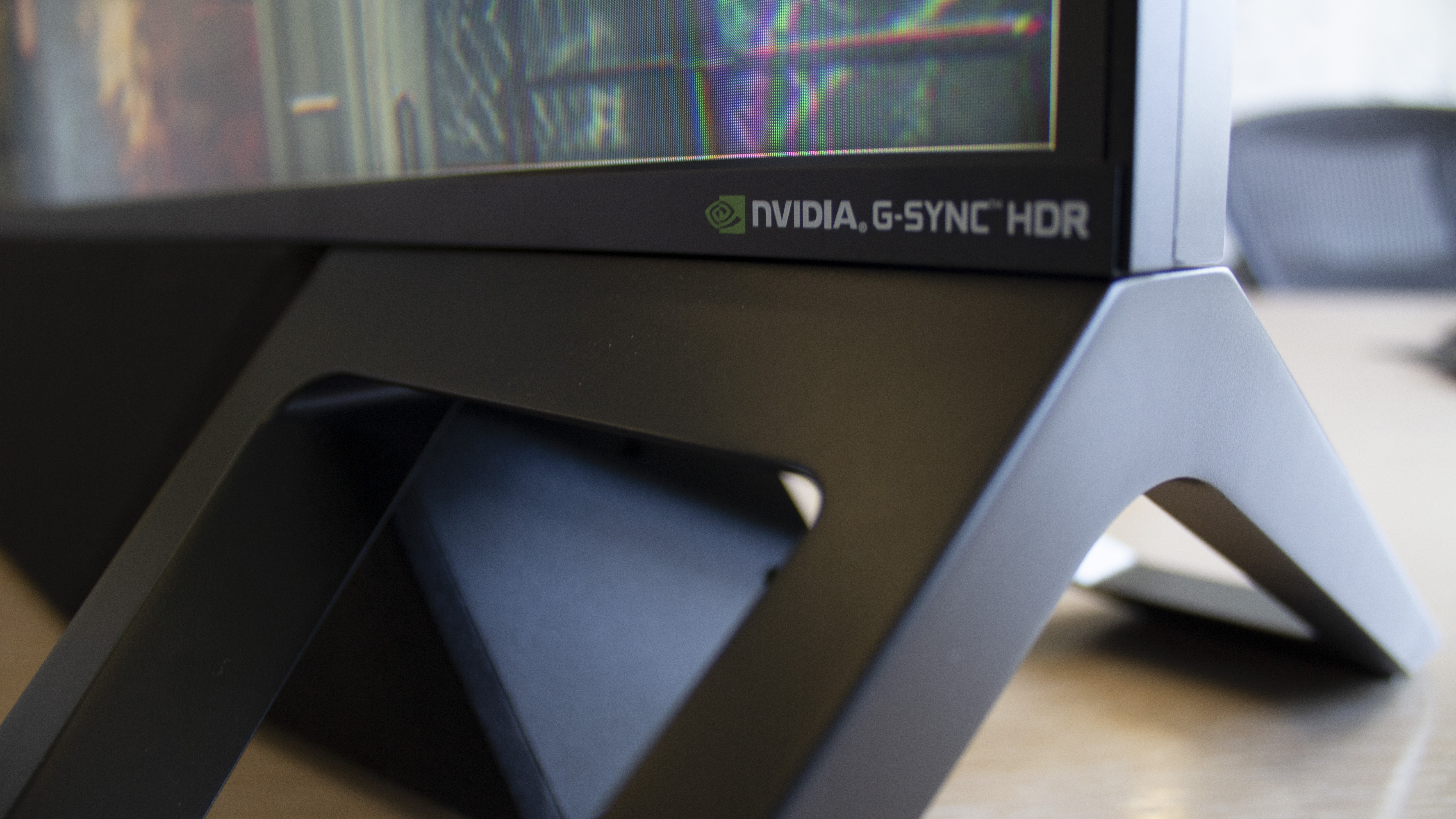
Also disappointing is the sluggish 14ms response time, an effect of HP's decision to use midrange MVA panel tech as opposed to IPS. Whereas MVA is cheaper to make and admittedly has better contrast, IPS panels tout superior color reproduction, viewing angles, and response times. Though you can crank it into overdrive and savor a significant boost in performance—4ms gray to gray, to be exact—doing so puts your monitor at risk for unwanted artifacts or reverse-ghosting. I didn't run into any technical glitches myself, however it is possible your experience will differ.

On the back of the HP Omen X Emperium 65 is a healthy dose of RGB lighting you can customize to a limited extent in the depths of the monitor's settings. In order to do so, a thumbstick, comically located on the back of the display lets you navigate menus as you would on a much smaller screen. That said, if you're so inclined, you can also just use the remote. Rudimentary as it is, it's the exact same remote you'll find bundled with the Shield TV. Buttons are limited, and the volume controls are touch-based, therefore fickle, but it'll get the job done nonetheless.
Along the left side, the Emperium has an Ethernet jack, two USB 3.0 ports, DisplayPort 1.4, three HDMI ports, 3.5mm audio out, and SPDIF. On the right is a pair of USB 3.0 connections. Now I know what you're thinking: why the hell does this TV big ass monitor have a headphone jack? My phone doesn't even have one of those anymore. What kind of monster would dare plug their cheapo analog headphones into a $5,000 display? Oh, that's not for headphones.
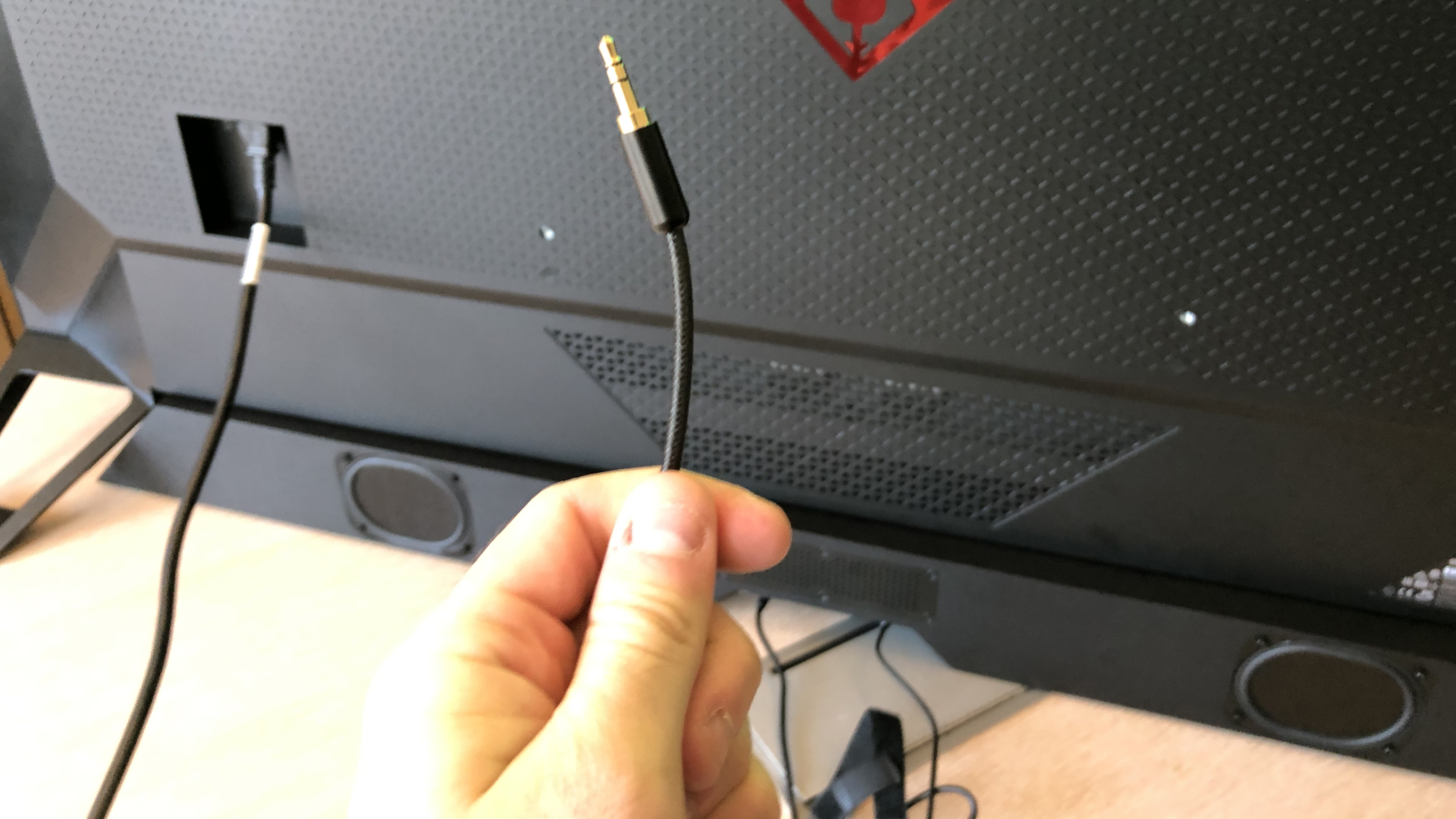
Although it does support SPDIF optical audio, in an effort to further lower production costs, the included soundbar comes with nothing more than a short 3.5mm headphone cord. You can turn on Windows Sonic for a low-rent virtualized surround sound experience. But unless you purchase and connect a toslink cable of your own, the onboard audio is middling. Having tested it myself playing Borderlands 2 in an isolated conference room, gunshots sound as flat as its Jesper Kyd's subtle yet atmospheric soundtrack.
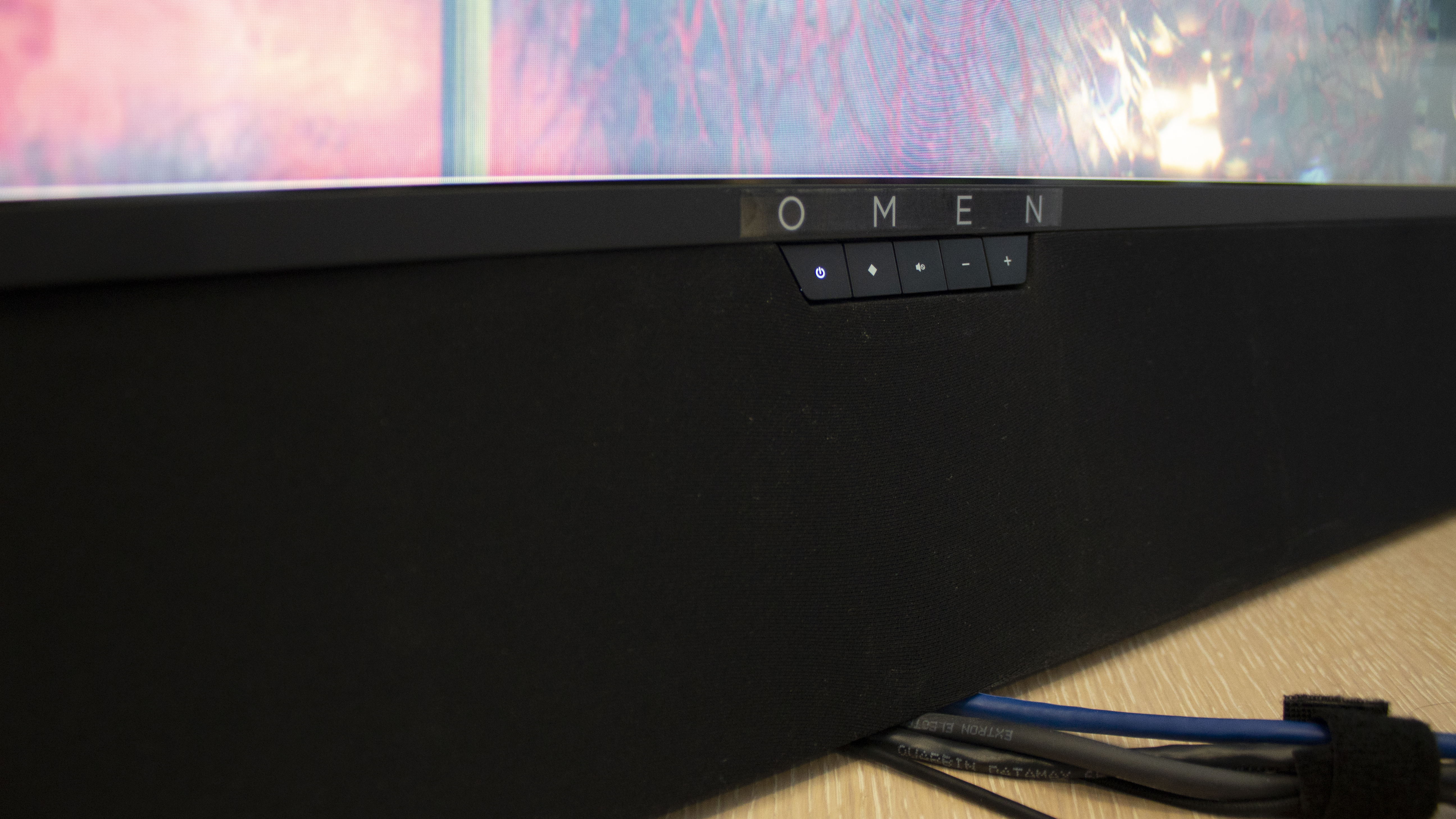
As I complained to my colleague, Alan Bradley, the poor quality of the soundbar actively hindered my enjoyment of an otherwise spectacular video game. He agreed, adding that without SPDIF, the audio sounds "muddy." Unfortunately, I don't have the optical cable I would need to find out for myself whether or not the frequency range improves with HP's proprietary multi-channel setting toggled on.
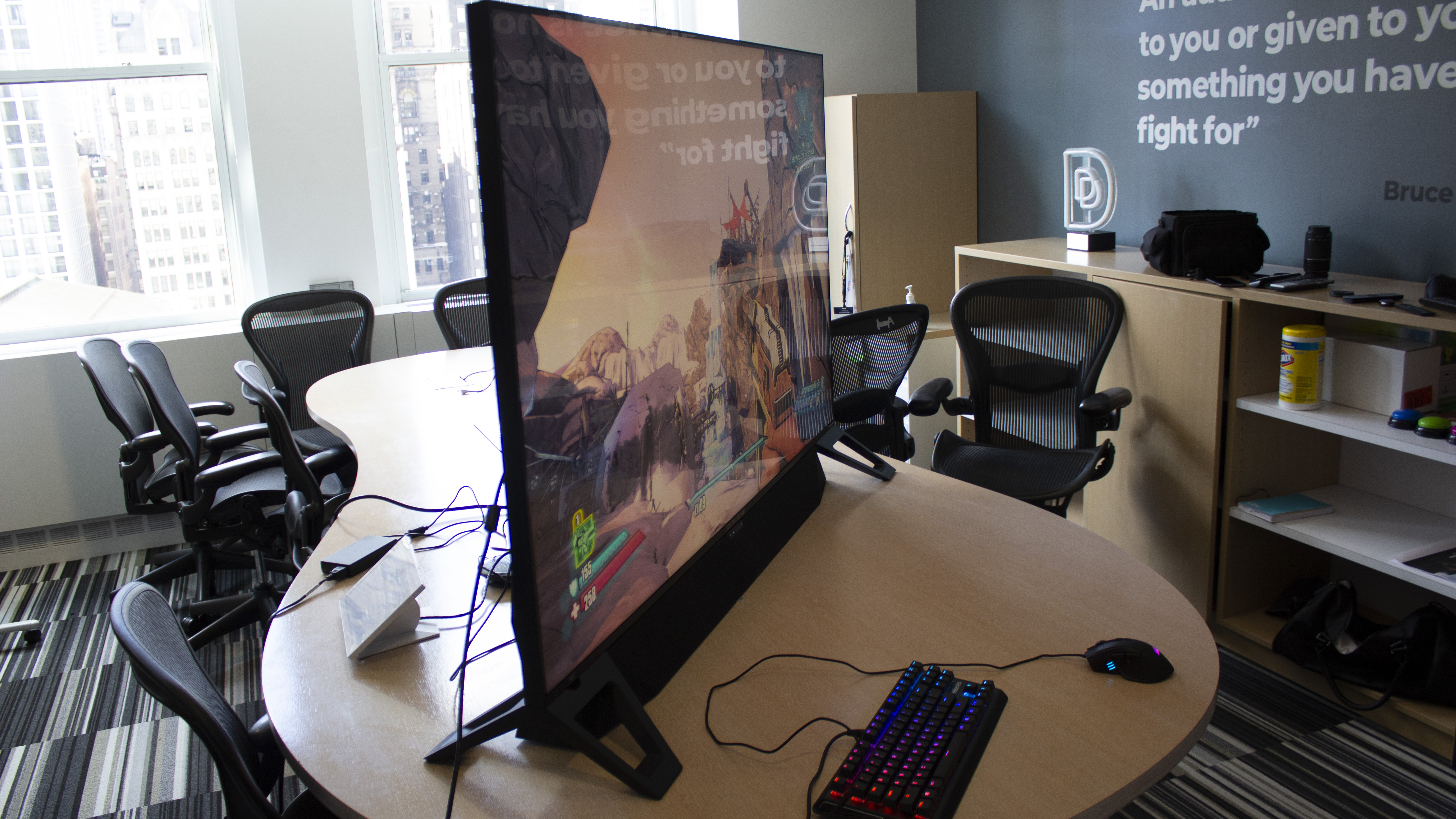
Five grand is a lot. If I had it, I could buy the HP Omen X Emperium 65, the only Nvidia BFGD in existence right now. And while a 65-inch 4K HDR 144Hz G-Sync monitor sounds enticing, too many caveats hold this one back from greatness. You can mount it to the wall, but the hardware required to do it is sold separately. It parades an industrial grade DCI-P3 color gamut, but its second-rate MVA panel could benefit from QLED or OLED backlighting. It flexes a 4ms overdrive response time, but turning it on can lead to serious technical repercussions. A soundbar is included, but it leaves something to be desired out of the box.
For $4,999.99, I could buy a 65-inch 4K 60Hz OLED TV from LG or even a 75-inch 120Hz QLED model from Sony and still have money left over for a proper vacation. Or, if you're the stay-at-home type, every modern game console and an RTX 2080 Ti. Then again, maybe you don't care about the money. Maybe you just want the best of the best gaming monitors no matter how much it sets you back. In that case, I regret to inform you the HP Omen X Emperium 65 flounders in that regard, too. Instead, it's an unexceptional TV with a few nifty tricks up its sleeve, carefully engineered to excite unknowing onlookers at a consumer trade show.
Whether you consider it a TV, a monitor, or both, the HP Omen Emperium 65 may present some compelling specs, but don't be fooled: the first-ever Nvidia BFGD makes some pretty unflattering sacrifices despite its extravagant $5,000 barrier to entry.
